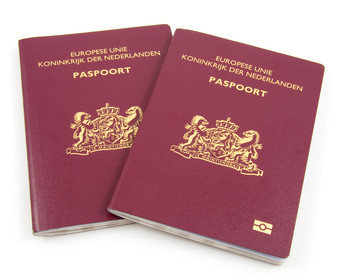The white elephant in your passport: EU borders have never checked a fingerprint

Eight years since European citizens were first required to include a fingerprint scan in their passports, the technology has never been used to check a passenger crossing a border, according to a Dutch media investigation.
Compulsory fingerprinting was introduced in 2009 across the European Union as part of the new biometric passport, which was intended to improve border security. The measure aimed to stop ‘lookalike fraud’, whereby somebody travels on the passport of someone who strongly resembles them.
Dutch local authorities have spent €32 million installing 4,800 scanners which have taken 20 million prints in the last eight years. But according to an investigation by NOS, border control agencies are still unable to use them to verify passengers.
European nations have not yet agreed on a way to share access to the ‘key’ – the digital signature that allows other countries’ border guards to read their fingerprint information – making the exercise redundant.
No information shared
The Dutch interior ministry admitted to NOS that it had not shared its ‘key’ with any other country or received the necessary information from any foreign government.
Schiphol airport also said that its machinery for reading fingerprints had never been tested for security – and so cannot be used.
Biometric security expert Max Snijder said the project had been a comprehensive failure. ‘The fact that we have to supply fingerprints that can’t actually be used is incomprehensible,’ he told NOS.
However, the Netherlands cannot opt out of the scheme because it is a binding agreement between the signatories to the Schengen open borders agreement. Within the EU only the UK, Ireland and Denmark are able to opt out.
9/11
Passport applicants who refuse to submit their fingerprints can be refused a passport under a ruling by the Council of State last May, which said that the Dutch government’s obligation to comply with European agreements outweighed personal privacy concerns.
The idea to include fingerprints in passports was a response to the terrorist attacks of 9/11. Politicians argued that adding extra layers of security to passports would make it harder for terrorists to pass through airports undetected. Within a month the Dutch government had come forward with a plan to include fingerprints.
The measure was also intended to reduce identity fraud. But local authorities said they had only used it in a handful of cases. A sample of fingerprints in passports also found that around 20% were invalid, either because the quality was too poor or because of an administrative error such as saving the image upside down.
A spokesman for the interior ministry told NOS that it was hopeful that Europe would manage to arrange for the exchange of biometric information ‘within a number of years’.
Thank you for donating to DutchNews.nl.
We could not provide the Dutch News service, and keep it free of charge, without the generous support of our readers. Your donations allow us to report on issues you tell us matter, and provide you with a summary of the most important Dutch news each day.
Make a donation